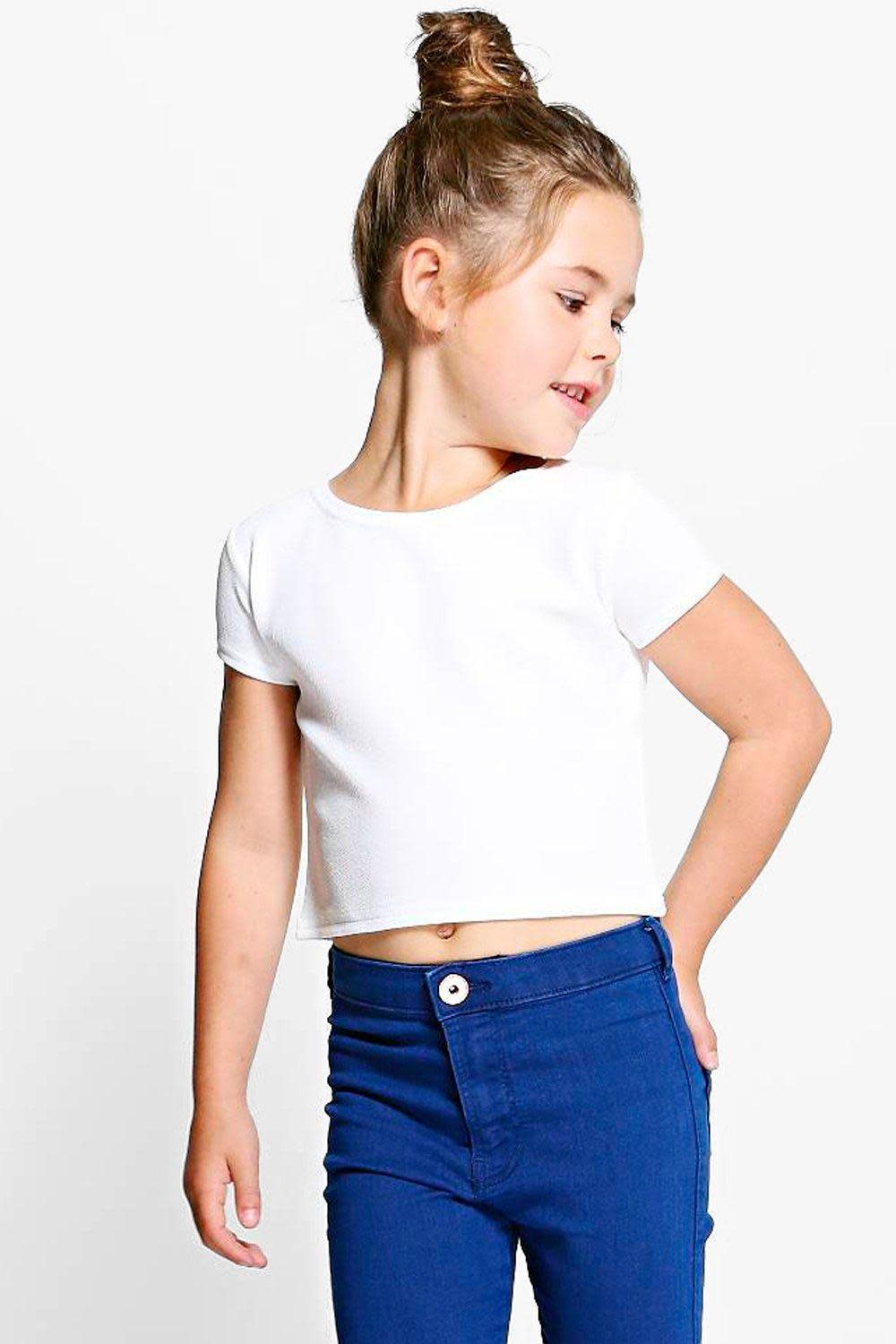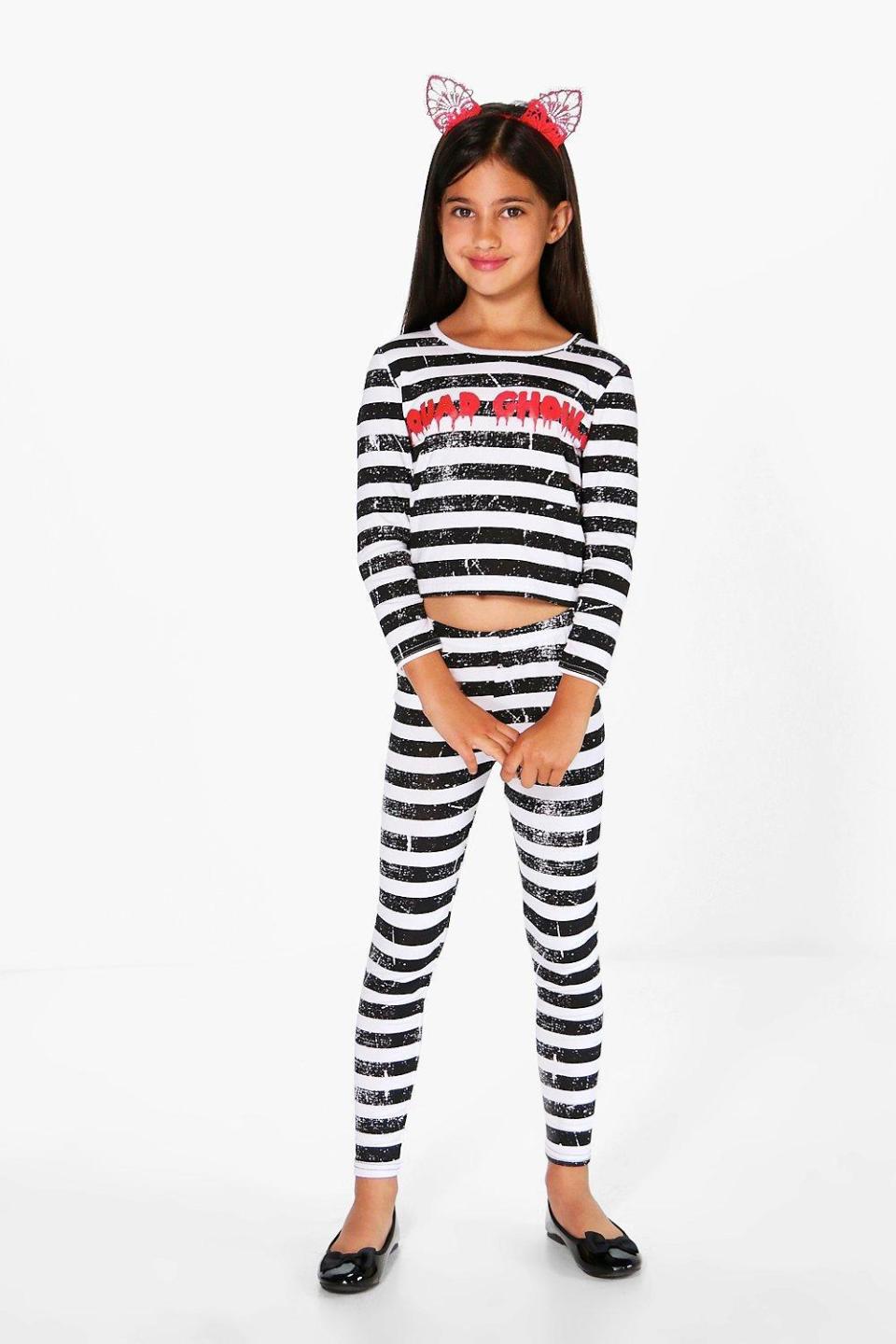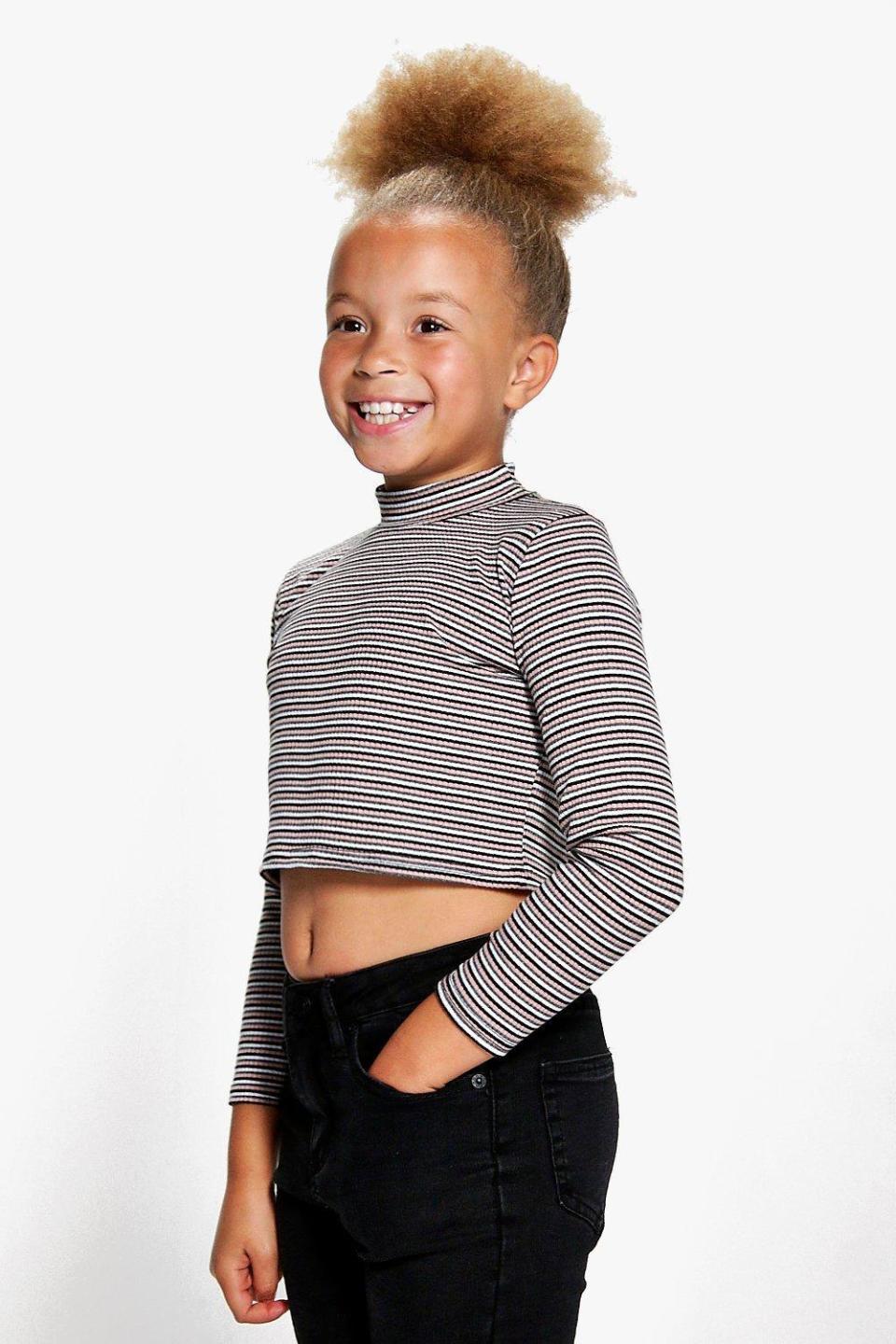Is It OK to Sell Crop Tops to Kids?

Is this too much, or just cute? (Photo: Boohoo.com)
By the age of 6, most American girls have expressed some level of dissatisfaction with their bodies and weight. And by the age of 2 — two! — many children recognize brand names, eating disorder specialist Catherine Steiner-Adair tells PBS.
This is why one can’t help but see online fast-fashion retailer Boohoo’s choice to make and market crop tops for their new Boohookids line, which launched today in sizes for children ages 5 to 12, as a reason to pause for concern. (A representative for Boohoo had not responded to our request for comment as of press time. We’ll update this story with any comment, if received.)
The National Eating Disorder Association points to psychological factors like low self-esteem, social factors like fashion standards of thinness, and interpersonal factors like being teased about one’s weight as potential factors that correlate to the development of eating disorders.

Photo: Boohoo.com
Unfortunately, eating disorders aren’t the only area of concern, when it comes to choices in how young girls dress.
A recent task force convened by the American Psychological Association (APA) on the sexualization of girls found that girls are sent unhealthy messages about their sexuality when:
They receive messages that their value comes only from their sexual appeal
They are held to a standard that equates narrowly defined physical attractiveness with “being sexy”
They are sexually objectified
Sexuality is inappropriately imposed upon them by others
The group notes, “Anyone (girls, boys, men, women) can be sexualized. But when children are imbued with adult sexuality, it is often imposed upon them rather than chosen by them.”
Further complicating things, the APA also concluded that when girls purchase or ask their parents to purchase “clothes designed to make them look physically appealing and sexy” they are then sexualizing themselves. And so it seems highly possible to read the selling of crop tops to elementary-school-age children as a one-two punch of the sexualization of girls: It imposes the idea of a style in which they are asked to dress older — and in a way that presents their bodies in a more mature and less child-like way — than they are (and thus also at a corresponding level of developmental sexuality). And it also leads to children sexualizing themselves by wanting to fit in by wearing clothes that make them look “sexy” (by, again, wearing a style that normally is worn by an older adult with a fully articulated and age-appropriate sexual identity).

Photo: Boohoo.com
In other words, when we sell crop tops to girls, it seems that our girls just can’t catch a break, being sexualized by others in a way that forces them to sexualize themselves.
And the impact of this kind of sexualization is pretty grim. The APA found that:
Self-objectification can lead to impaired computational abilities for women
Sexualization is linked to the development of eating disorders, low self-esteem and depression in girls and women
Self-objectification also is linked to diminished sexual health among adolescent girls, resulting in everything from lower condom usage to diminished sexual assertiveness
And a 2014 study conducted by researchers at the University of Texas at Austin found that girls ages 10 to 15 who had a higher level of “internalized sexualization” — that is, the belief that it’s important to be sexually attractive — earned lower grades in school and scored lower on standardized tests than their peers.
So while it may seem silly to obsess over a child’s clothing choices, the choices presented to children — and the message these choices send them about their bodies and identity — can have serious, life-long effects on every aspect of their health and future success.
Which isn’t to say that crop tops alone are to blame for the ways that girls are sexualized by society. Indeed, school dress codes are notorious for the way in which they impose sexuality onto children by equating their clothing choices, even for the pre-pubescent, with sex — or at least with telling girls that it’s their responsibility to keep boys from thinking about sex and acting out on those thoughts. Because in theory, girls — even as young as the 5-year-olds being sold crop tops at Boohoo — should be able to wear whatever they want without others imposing sexuality onto them. The problem remains, however, a dominant culture in which girls are held to a double standard, both asked to sexualize themselves and prevent others from seeing them as sexualized. A 5-year-old should be able to wear a crop top without concern because, indeed, there is nothing sexual about the body of a 5-year-old. But what do we do in a world where we might see a 5-year-old in a crop top and worry about the kind of message she is sending?
The answers, for now, seem to lie not in discussions of how we dress our kids, but how we talk to our kids about consent, identity, and responsibility. If we can better build up our girls to understand their identities outside of their external appearances, better teach our sons and daughters both that it’s never OK to hold someone else accountable for your own behavior and choices (including those having to do with sexual activity), and better teach everyone to be responsible for one another to best create a safe environment where kids can be kids and not worry about being sexualized by themselves or others (and not worry — or worry less — about being asked “What were you wearing?” should they ever find themselves to be the victim of sexual assault), then hopefully we’ll all be better off.
Follow us on Instagram, Facebook, and Pinterest for nonstop inspiration delivered fresh to your feed, every day.

